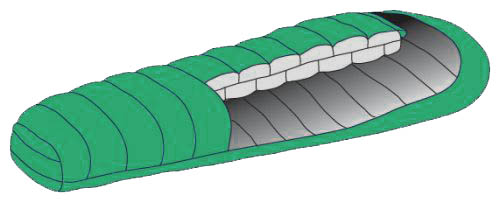
No products
CUMULUS SLEEPING BAG CONSTRUCTION
Cumulus use 5 different construction designs of feather chambers, each of which is suited to the amount of down used. As for the design of our sleeping bags and jackets, we have two principles. Firstly, we want to be transparent and always keep you informed of the construction used in any particular model - which is not the norm with our competition. Secondly, we try our hardest to ensure that our designs are more advanced than those of our competition (with a comparable weight of down).
Stitching design
This is the simplest construction design of down chambers. Stitching along the entire length of the insulating surface means there are lines where there is no insulation of down. For this reason this design is often criticized and is not suitable for sophisticated products. It should be noted, however, that the stitching in the sleeping bag does not make you feel as if you were wearing a "ladder" of cold lines. Accordingly this design is perfectly suited for purely summer sleeping bags or light down jackets and it is widely used.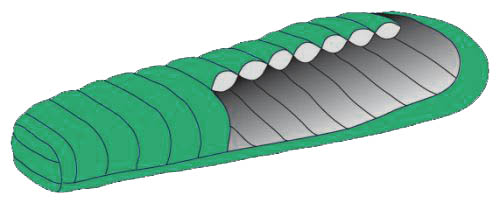
Box structure (“H” chambers)
This is the most common method of construction of down chambers, used by most manufacturers of sleeping bags filled with 200-1200 g of down. At Cumulus we strive to vary the construction of chambers, depending on the degree of sophistication of the sleeping bag so we only use the “H” chamber in some Spring/Summer models. In the “mummy”- style sleeping bags filled with 300 g of down or more, we use a more advanced trapezoid design.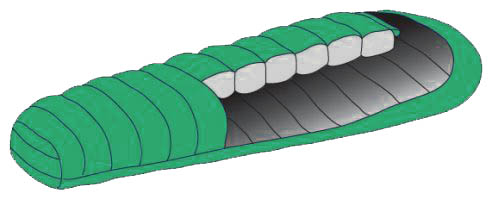
Trapezoid Construction
The use of this design in series such as Lite Line, Panyam and Mysterious Traveller gives us an edge over most of the competition which, with a comparable weight of down, uses more basic solutions, mainly “H” chambers or even stitching. The trapezoid is a more advanced design than the box structure, because there is less likelihood of "cold spots" than with “H” chambers. Trapezoid chamber we use in two- and three-season sleeping bags with fillings from 300 g to 700 g of down.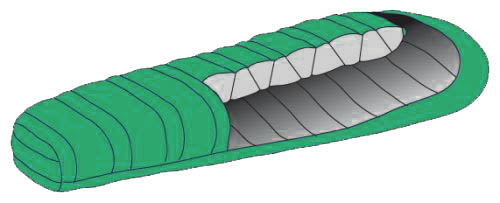
"V” chamber construction
The most advanced design, except for block construction, the “V” chambers afford very little probability of the occurrence of cold spots thanks to the alternating triangular cross section design of the chamber. Cumulus use it in models Alaska 900, Teneqa 700 and Teneqa 850. The relatively light weight of the structure has allowed to achieve so difficult to beat weight of advanced winter sleeping bags.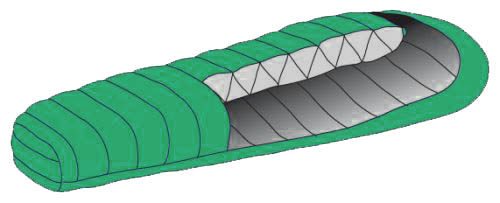
Brick construction (double “H” chamber)
The most advanced design in the structure of down chambers, almost completely eliminating the possibility of the formation of "cold spots". Due to the degree of complexity, the use of such a structure makes sense only in the most advanced expedition-sleeping bags used in the most extreme conditions. In slightly lighter sleeping bags, with the aim of improving the thermal system most cost effectively, it is better to increase the filling than to abandon the use of “V” or trapezoidal structures
